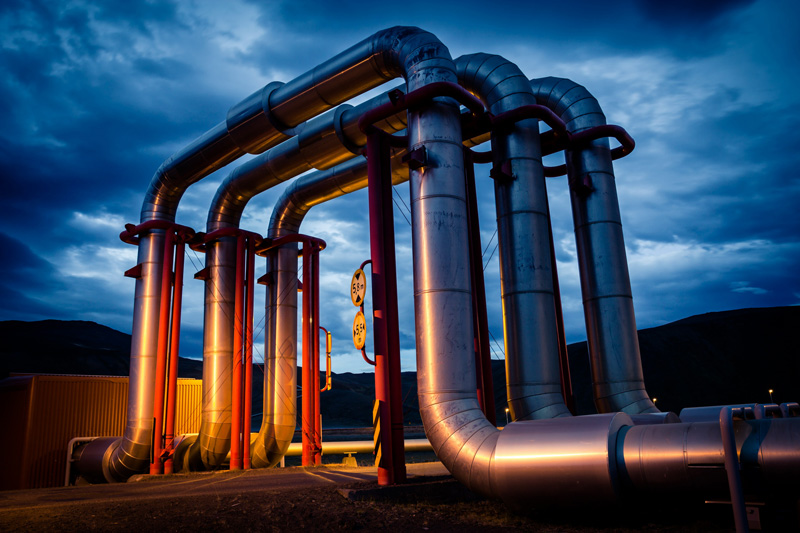The idea of fracking gets most activists up in arms—but the technique could be used to tap into a nearly limitless resource. Geothermal energy can help utility companies switch to a bountiful source of clean energy beneath our feet.
Traditional geothermal plants, which have existed for decades, work by tapping natural hot water reservoirs underground to power turbines that can generate electricity 24 hours a day. However, few sites have the right conditions, so geothermal only currently produces 0.4% of America’s electricity.
Despite the current low output, geothermal energy’s potential is enormous. The Department of Energy (DOE) estimates there’s enough energy in those rocks to power the entire country five times over. The Energy Department wants companies to develop new technologies to harvest that heat.
Companies are going wild with new ideas to tap into the resources.
“The earth beneath our feet contains vast energy potential, enough to power the global electric grid many times over,” Dr. Susan G. Hamn, the former director of the Geothermal Technologies Office, wrote in the department’s “Geovision” report. Hamn currently serves as the acting director of the Integrated Strategies, Office of Energy Efficiency and Renewable Energy. “This natural geothermal heat radiating from the Earth’s mantle—a byproduct of our solar system’s formation billions of years ago—is virtually limitless in supply.”

What is geothermal energy?
The term “geothermal” means “Earth heat” or “heat of the Earth.” Geothermal heat flow is expressed visibly at the surface as volcanoes, fumaroles, hot springs, and geysers.
In its report, the DOE stated, “Geothermal energy is secure, reliable, flexible, and constant. It offers the United States a renewable source for power generation. It can also help heat and cool homes and businesses. Geothermal resources and technologies are primed for strong deployment growth and stand ready to provide solutions to meet America’s 21st-century demands for energy security, grid stability and reliability, and domestic and commercial heating and cooling needs.”
Lauren Boyd, the Energy Department’s acting director of the Geothermal Technologies Office, estimates geothermal could supply 12% of America’s electricity by 2050 if technology improves.
How do we access geothermal energy?
Companies are working to find the most efficient and cost-effective ways to tap into this renewable resource.
“Over the past century, geothermal researchers and operators have worked to harness this resource. Geothermal is an increasingly valuable contributor to energy diversity—and for good reason: it’s an ‘always-on,’ renewable, 50-state solution that can provide flexible electricity and heating and cooling solutions to all Americans,” Hamn wrote.
The DOE launched the Enhanced Geothermal Shot, an initiative to reduce the cost of enhanced geothermal systems (EGS) by 90% to $45 per megawatt hour by 2035.
Some companies leading the charge include Fervo Energy, a developer, owner, and operator of next-generation geothermal assets. Fervo uses fracking techniques to open rock and inject water into the fractures; this creates artificial geothermal reservoirs. Fervo has repurposed the traditional methods to get oil and gas from the Earth to access this clean energy resource.
Eavor, a Canadian start-up, is building large underground radiators to access geothermal energy. Eavor is using drilling methods that originated in Alberta’s oil sands. Other companies want to use plasma or energy waves to drill and tap “superhot” temperatures that could cleanly power thousands of coal-fired power plants by substituting steam for coal.
How can data help grow geothermal energy?
Data can be used in a multitude of ways to help expand geothermal energy and its cost-effectiveness.
“To grow as a national solution, geothermal must overcome significant technical and non-technical barriers in order to reduce cost and risk,” Hamn wrote. Data can help new developers entering the space analyze a geothermal project’s risk and return.
The recent infrastructure bill provided $9.5 billion for clean hydrogen, but only $84 million was allocated for advanced geothermal. Those incentives still exist for developers looking to enter the space and deploy efficient technology and techniques to tap into the resource.
- 87% of Utilities Have Experienced at Least One Data Breach in Last Three Years - February 5, 2024
- Can Drones Lower Your Next Utility Bill? - January 10, 2024
- Onshore Wind Farms Are The Next Big Thing In Renewable Energy - December 6, 2023




